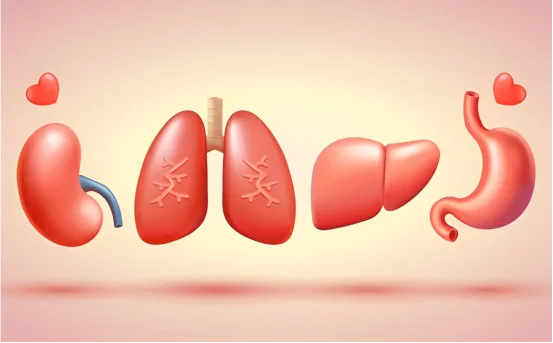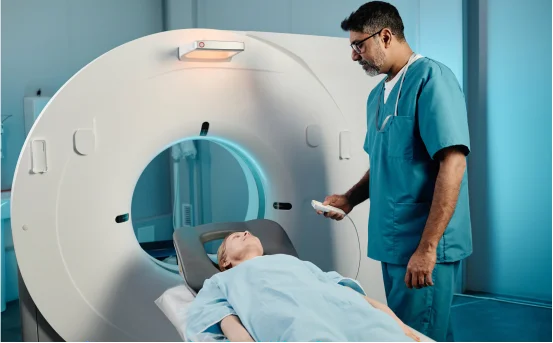Pneumonectomy surgery involves the removal of an entire lung and is one of the most extensive operations performed in thoracic medicine. Although the procedure might seem extreme, it becomes an essential option when other avenues of treatment can no longer control the underlying disease. Recognising the signs and symptoms for pneumonectomy surgery is therefore important for patients, families, and healthcare professionals alike. Early identification of the symptoms for pneumonectomy surgery and conditions listed below can facilitate timely referral and surgical planning.
What Is Pneumonectomy?
The term symptoms for pneumonectomy surgery describes a surgical intervention in which one lung is entirely excised to manage serious pulmonary disorders. This operation is generally advised for individuals diagnosed with the symptoms for pneumonectomy surgery:
- Non-small cell lung cancer (NSCLC) that is locally advanced and confined to a single lung.
- Chronic and extensive tuberculosis when drug therapy has not arrested structural lung damage.
- Severe bronchiectasis failing medical treatment, causing recurrent infections and respiratory distress.
- Life-threatening fungal infections, such as aspergillosis, that have eroded lung tissue beyond repair.
- Traumatic lung injury, often from accidents, where extensive laceration or contusion leaves no viable lung parenchyma.
- Congenital lung malformations that impair function and lead to recurrent illness in childhood or adulthood.
In each case, preservation of the diseased lung is judged to be more dangerous than removal. Cardiopulmonary specialists weigh these factors carefully before proposing the procedure.
Why Pneumonectomy Is Performed
Pneumonectomy is rarely the first option for treating lung disease. Instead, it is reserved for situations where more conservative procedures—such as lobectomy, which removes only a segment of the lung—fail to address the problem. Surgeons may turn to a complete lung removal for several reasons: to excise a malignant tumor that has invaded almost the entire lung, to bring an end to a stubborn infection that medical therapy cannot clear, to halt the advancement of a life-threatening condition such as widespread tuberculosis or certain fungal diseases, or simply to relieve debilitating symptoms, like breathlessness or frequent bleeding, that impair daily functioning. Prompt recognition of these clinical cues allows both clinicians and patients to gauge the appropriateness of surgery before a crisis develops.
Common Symptoms for Pneumonectomy Surgery To Lead
-
Recognizing the Symptoms for Pneumonectomy Surgery
It is crucial to understand the symptoms for pneumonectomy surgery to make informed decisions regarding treatment options.
Although no single symptom guarantees that a pneumonectomy will be necessary, the following warnings, when persistent or worsening, often prompt further investigation.
Awareness of the symptoms for pneumonectomy surgery can lead to earlier diagnosis and better outcomes.
-
Chronic Cough
A cough that lingers longer than eight weeks often merits deeper scrutiny. In particular, lung cancer patients may experience a dry hacking cough or, conversely, a cough that produces bloody sputum. If treatment with antibiotics, inhalers or corticosteroids yields little improvement, the underlying course is more likely to be serious.
Chronic cough and lung cancer often appear intertwined, since a persistent cough can be one of the earliest warning signs of the disease. While not every lasting cough indicates cancer, especially in people with a smoking history or pre-existing lung disease, physicians remain vigilant about that symptom. A thorough work-up is generally warranted when the cough changes in character, is accompanied by weight loss, or is resistant to standard therapy.
As overall lung function declines, many patients report an increasing struggle for breath, even during tasks that once felt effortless, like walking to the mailbox. This sensation of air hunger—clinically termed dyspnea—can emerge in conditions ranging from lung cancer to severe pulmonary infections and bronchiectasis. For lung surgeons, a gradual progression in shortness of breath can be both a diagnostic marker and an indicator that a patient might ultimately require a major intervention such as pneumonectomy.
Chest pain associated with lung pathology usually presents as a sharp or localized discomfort rather than a dull pressure. When the pain intensifies during inhalation or while coughing, its origin is more likely to involve the pleura, the membranous lining that coats each lung. Tumor invasion into the pleural space, irritation from an infectious process, or even rib metastases can produce this type of pain.
Hemoptysis, or coughing up blood, seldom goes unnoticed by patients, and it frequently propels them toward the emergency room. While it can arise from harmless conditions such as bronchitis, persistent and copious hemoptysis often points to advanced lung cancer, severe fungal infections, or active tuberculosis. In the surgical clinic, localized bleeding identified via bronchoscopy may lead to a recommendation for pneumonectomy to mitigate life-threatening hemorrhage.
Finally, those who find themselves repeatedly battling pneumonia, lung abscesses, or other infectious complications may be cornered into surgical options once antibiotics fail. A history of frequent respiratory infections, especially when coupled with structural lung disease, places a patient in the crosshairs of decision-making that includes the possibility of removing an entire lung to restore health.
-
Unintended Weight Loss
Recognizing the symptoms for pneumonectomy surgery alongside other warning signs is vital for timely intervention.
Losing weight without trying can be deeply unsettling, and when it happens alongside the other signs already mentioned, it raises the suspicion of a serious underlying problem. Both certain cancers and long-lasting infections—conditions that may ultimately require surgical intervention—are known to disrupt metabolism in a way that spurs drop in pounds.
-
Lingering Fatigue
Identifying the symptoms for pneumonectomy surgery can help guide treatment decisions, potentially avoiding unnecessary complications.
People with weakened lungs often describe a bone-deep weariness that rest alone does not erase. The explanation lies in insufficient oxygen being delivered to muscles and organs. Fatigue by itself is hardly unique; however, when it insists on persisting and is partnered with shortness of breath or cough, a deeper investigation is warranted.
-
Finger and Toe Clubbing
Patients should not ignore the symptoms for pneumonectomy surgery, as they may indicate serious underlying issues.
Noticeable changes at the tips of fingers and toes can be small yet highly informative. Abigail’s hands, for instance, grew slightly bulbous at the nail bed after months of undiagnosed bronchiectasis. Medical literature labels this trait “clubbing,” and it frequently appears in chronic pulmonary conditions, including lung cancer.
When to Reach Out for Help
None of these symptoms should be treated lightly, singularly perhaps yes, but the moment they arrive in combination, the cue is clear: seek out a specialist. A pulmonologist or thoracic surgeon can provide assessments that routine check-ups might miss. Catching disease early can dramatically alter a patient’s treatment path, in some cases sparing them the need for an extensive pneumonectomy entirely.
Proactive recognition of the symptoms for pneumonectomy surgery can significantly improve patient outcomes.
Diagnosis and Evaluation Before Surgery
Prior to recommending pneumonectomy, physicians gather detailed information about the patient’s overall health and lung condition through several standard diagnostic procedures:
- A chest X-ray or high-resolution CT scan provides an initial view of lung anatomy and any masses that may be present.
- Bronchoscopy allows doctors to visualize the airways directly, collect secretions, and, when needed, remove small tissue samples.
- Pulmonary function tests (PFTs) quantify the patient’s remaining lung capacity, revealing how well they might manage with a single lung after surgery.
- If malignancy is suspected, a biopsy confirms the diagnosis and helps stage the tumor.
- Lab work and an evaluation of cardiac function complete the picture, ensuring that the heart can compensate for the altered respiratory dynamics that will follow surgery.
Surgery is contemplated only when these assessments show that the disease is confined to one lung and that the individual has adequate physiological reserves to endure the operation.
Understanding the symptoms for pneumonectomy surgery can help patients and families navigate the healthcare system more effectively.
Recovery and Life After Pneumonectomy
Ultimately, the symptoms for pneumonectomy surgery highlight the need for comprehensive evaluation and timely medical intervention.
Pneumonectomy is extensive, yet most patients experience a good recovery when postoperative care is attentive and rehabilitation is followed diligently:
By recognizing the symptoms for pneumonectomy surgery early, patients can access appropriate care and support.
- Patients typically remain in the hospital for a week to ten days while receiving routine monitoring, supplemental oxygen, and medication to control pain.
It is essential to remain vigilant about the symptoms for pneumonectomy surgery, as they can indicate a need for urgent treatment.
- Once home, structured pulmonary rehabilitation programs teach breathing exercises and gradually increase physical activity to compensate for lower lung volumes.
- Lifestyle adaptations—such as quitting smoking, avoiding respiratory irritants, and pacing strenuous tasks—help sustain energy during daily routines.
Although some may feel fatigued in the early months, many return to near-normal activities by the end of the summer.
For those undergoing surgery for cancer, frequent follow-up visits remain essential for surveillance and early intervention if needed.
Conclusion
Being aware of the symptoms for pneumonectomy surgery can empower patients to take charge of their health and seek necessary help.
Pneumonectomy can prolong or save life when a lung is irreparably damaged by tumor, infection, or advanced lung disease. Early recognition of warning signs—persistent cough, increasing dyspnea, atypical chest discomfort, or coughing up blood—facilitates prompt evaluation and, when warranted, timely surgical intervention.
Patients should educate themselves about the symptoms for pneumonectomy surgery for better health outcomes.
Should you or someone close to you continue to experience cough, wheezing, shortness of breath, or any other troubling respiratory sign, it is important not to dismiss the symptoms as trivial. Contact a healthcare professional and request a thorough assessment. Identifying lung issues at an early stage allows for more effective treatment and frequently leads to better long-term results with fewer complications down the road.
In conclusion, recognizing the symptoms for pneumonectomy surgery is critical for timely healthcare interventions.























